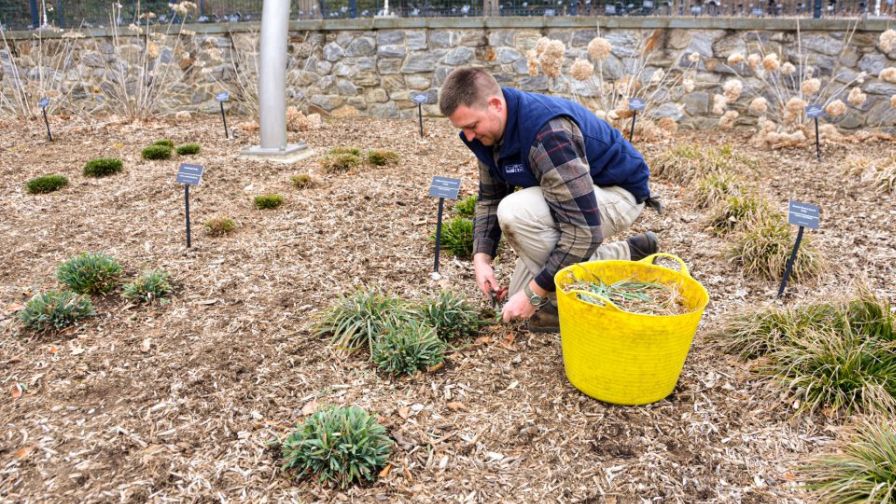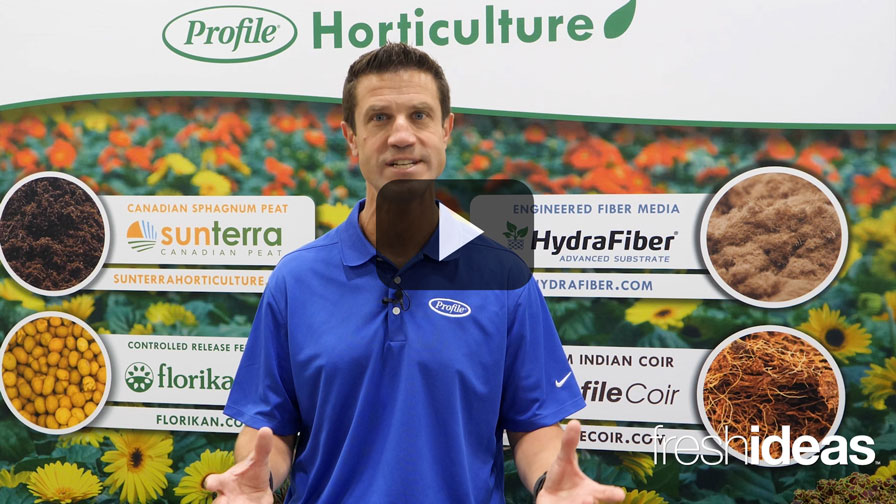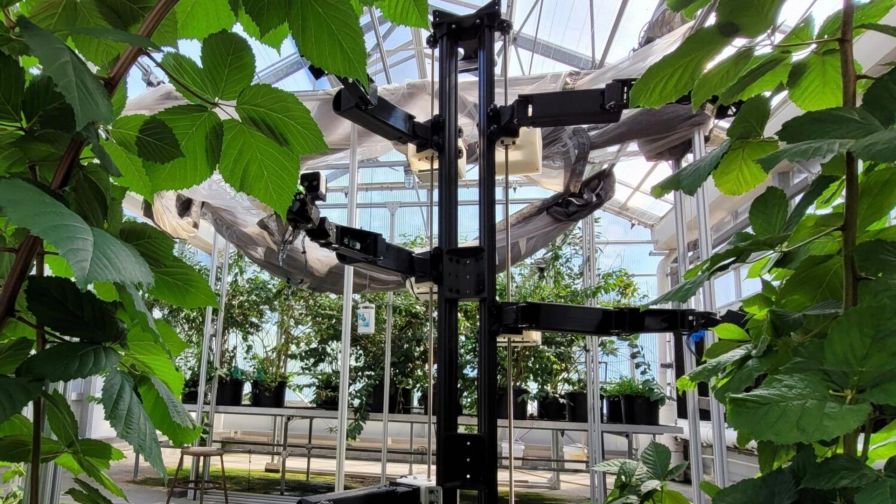Carex Trials Show Versatility in Shade, Sun, and Soil

Sam Hoadley, Manager of Horticultural Research at Mt. Cuba Center in Hockessin, DE, works in the Carex trial garden. Photos: Mt. Cuba Center
One of the best parts of the horticulture industry is the variety. There are hundreds of genera of flowers, houseplants, and shrubs, thousands of species, and seemingly endless varieties. Consumers can find nearly any color, and breeders are working every day to minimize or eliminate pest and disease challenges.
Mt. Cuba Center, a botanic garden in Hockessin, DE, dug deep into Carex. The research team at Mt. Cuba sought to prove how versatile this genus can be, and find ways for Carex to serve as a solution for gardening challenges. Sam Hoadley, Manager of Horticultural Research at Mt. Cuba, shares the insightful results of a four-year Carex trial (learn more here).
Four-Year Carex Trials
Horticulturalists at Mt. Cuba planted 70 species and cultivars of Carex in the fall of 2017. The trial began in the spring of 2018 and was completed in the fall of 2021. There was also a separate mowing evaluation conducted in 2022.
When choosing a new trial, Hoadley says his team’s decision-making process at Mt. Cuba usually falls into one of two categories, and Carex fit both. The first type of trial examines a large genus of plants with a lot of varieties that are commercially available. With so many choices, it can be overwhelming for nurseries, landscapers, and gardeners to choose the options best suited for them.
Trial results from Mt. Cuba can provide information on native plants that are disease-resistant, low-maintenance, and support wildlife. The other reason for trialing Carex, Hoadley says, is that some underrepresented plants need a spokesperson.
“Some plants need extra promotion. They’re good plants, but they are underrepresented in horticulture,” Hoadley says. “There’s a fair amount of Carex that are present in cultivation, but there’s not as much information about how to use them in a garden. Carex deserve to be elevated. They are great plants and they’re very versatile in the landscape.”
Mt. Cuba used the trial as an opportunity to show the versatility of Carex species. All 70 Carex species and cultivars were grown in full sun and full shade. Those under shade used a 60% shade cloth. The research team at Mt. Cuba Center also wanted to test how Carex adapt to average garden soil. The trial garden has a clay loam soil with a pH of about 6.5. The soil was well-drained but had high moisture retention and high nutrient content.
“That is outside of the comfort zone for some of these Carex,” Hoadley says. “Carex can be found in wet soils, dry soils, and intermediate soils depending on the species and where that species occurs. We wanted to see what plants would perform best in both full sun and shade in typical garden conditions.”
Carex Trials Show Adaptability
The trial revealed that many of the trialed Carex species and cultivars are adaptable to the soil and light conditions present in the trial garden, giving gardeners flexibility to tie their landscape together.
“With our trial, we didn’t offer any supplemental water beyond the first year of the evaluation, we didn’t fertilize these plants, and we gave them minimal care,” Hoadley says. “Many of them thrived throughout the duration of the trial.”
For example, Carex bromoides is found in shaded wetlands. But it also grew well in the trial garden soil at Mt. Cuba in shade and sun. Carex albicans is another top performer, serving as an alternative to Carex bromoides for drier soil.
He highlights several other varieties from the trials. Carex woodii is not yet widely available to the commercial market, but will benefit the industry soon. It is a low-growing, mat-forming species with blue foliage and attractive flowers. Hoadley says it would mix well with other spring perennials.
“It creates a nice dense mat that weeds have a hard time competing in,” Hoadley says.
Researchers at Mt. Cuba also gave high marks to Carex cherokeensis, which is a large, clump-forming species that is nearly evergreen year-round. It has a great texture and could be used as a specimen or in larger quantities.
Hoadley says Carex could be used in a wide variety of situations. It is known as a problem-solver due to its versatility. He uses it as a base layer in his own garden, serving as a living mulch, to suppress weeds and tie the landscape together. There is also an opportunity to use Carex as a lawn and turf alternative.
“When people are looking for sustainable alternatives to turf grass lawns, Carex is at the top of the list. It has a similar aesthetic and it’s a lower maintenance alternative,” Hoadley says.
If Carex is used as a lawn replacement, it could be mowed or not. With some low-growing species, Hoadley says, it only needs to be maintained once or twice a year if the homeowner desires a more naturalistic aesthetic for their lawn. Surprisingly, the majority of Carex seemed to be tolerant of mowing, but a small number also looked the part of a turfgrass lawn. Some of the best candidates for mowed Carex lawns include fine textured, low-growing rhizomatous species such as Carex pensylvanica and Carex woodii.
Carex Supports Wildlife
When evaluating native plants, Hoadley says the team is looking for ornamental value as well as wildlife support. Typically, they study pollinator interactions with the species and cultivars in the various trials. Carex is wind pollinated, so it is harder to measure the benefits without insect interaction with flowers. However, that does not mean that Carex does not offer support to wildlife.
Carex seeds are eaten by birds and mammals, its foliage consumed by caterpillars of various lepidopterans, and sometimes the Carex themselves are used as shelter and habitat. In fact, Mt. Cuba has been working on an initiative with the state of Delaware to propagate and grow Carex stricta. This species of Carex provides critical habitat for bog turtles when planted back in the wild.
“Bog turtles are an endangered species of turtle. They’re the smallest turtle in North America,” Hoadley says. “Bog turtles rely on Carex stricta as a nesting site. It’s great to see those Carex that have been grown by Mt. Cuba Center planted by the state and used as nesting sites by endangered turtles.”










